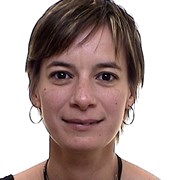The secondary objectives are to:
- develop ground-breaking technologies for self-healing inorganic membranes
- increase flux density of thin film membranes by increased surface kinetics based
- carry out predictable and verifiable lifetime analyses based on cation diffusion studies
- analyse chemical expansion stresses of membranes in operation
- design and assess innovative single tube rigs as lab-scale proof of concept prototypes with internal heating and cold seals
- assess the overall performance and cost reduction of OTM/HTM technology for CCS in selected cycles for power production and industrial application.
Membranes technology making use of robust and efficient ceramic mixed conducting (oxide ion, electron or proton, electron) membranes have the potential for significant cost reduction and higher efficiency of CCS in power production and industrial processes. However, a number of critical challenges must be addressed to achieve breakthrough development in lifetime and performance of these membranes, as high flux is also accompanied by less desirable increasing cation mobility, which results in faster degradation rate. SEALEM aims at a radical improvement of lifetime and performance of ceramic membranes by developing ground-breaking self-healing ceramic membranes with high flux from increased surface kinetics and fast bulk diffusion. Self-healing membranes will allow cheaper production of membranes, major increase in lifetime, and reduced operational costs, as faults created upon operation or manufacturing would repair themselves. Two novel healing mechanisms will be investigated in SEALEM. Models for lifetime prediction of membranes will be created from an integrated knowledge on surface kinetics, kinetic demixing and chemical creep, and stresses in membranes operating in a chemical potential gradient set by industrial applications using both theoretical and experimental approaches. The models will be used for assessment of membrane technology in power and industrial cycles. SEALEM will further develop novel module designs with cold seals and internal heating of membranes. The research project lasts 4 years, costs 16.4 MNOK and is led by UiO in collaboration with SINTEF and NTNU. It educates one PhD candidate and trains one post-doctoral researcher.
